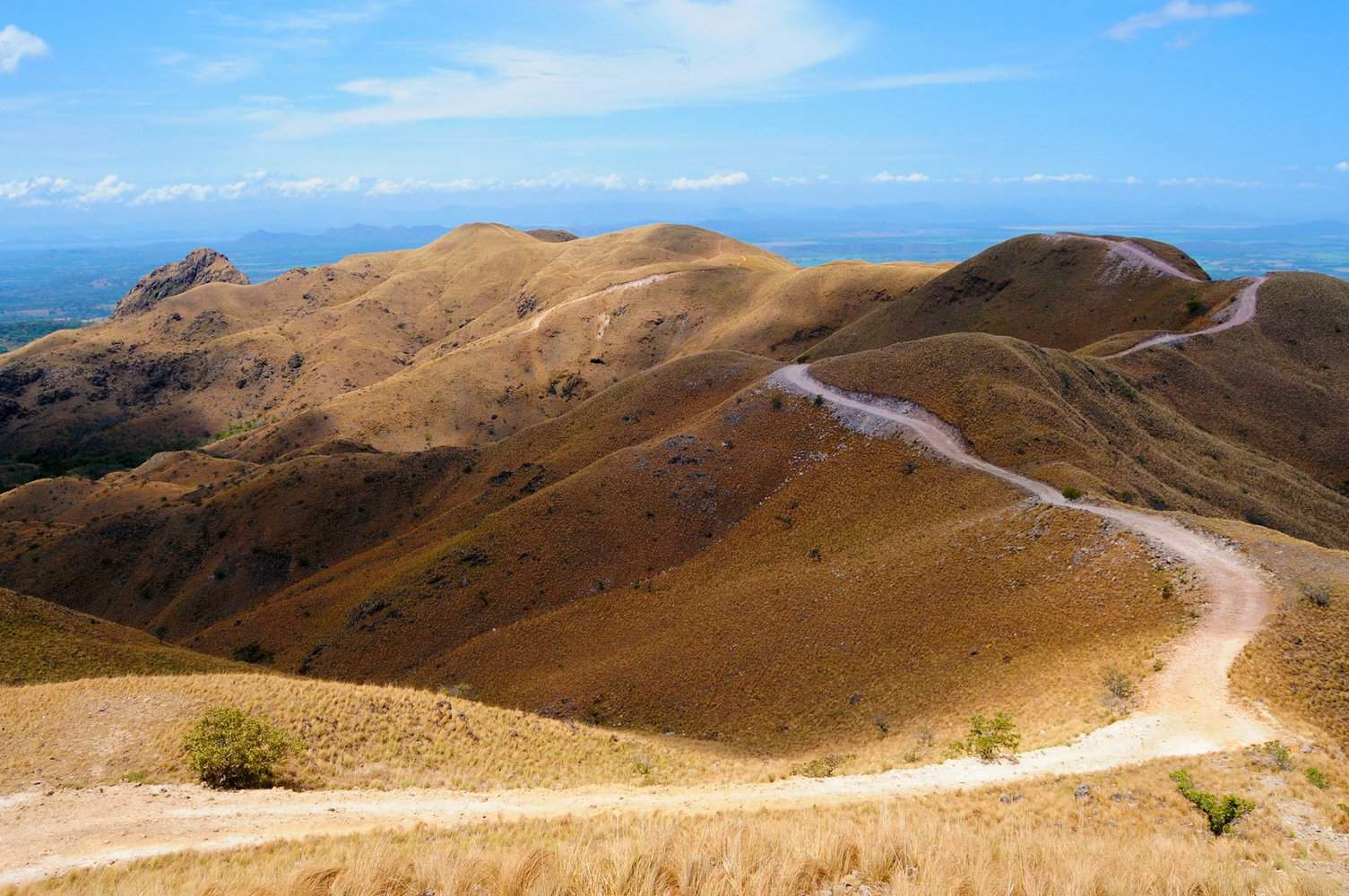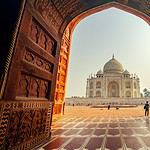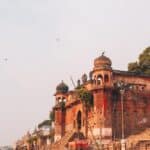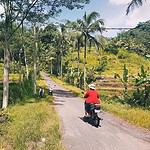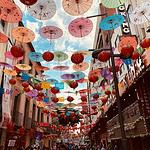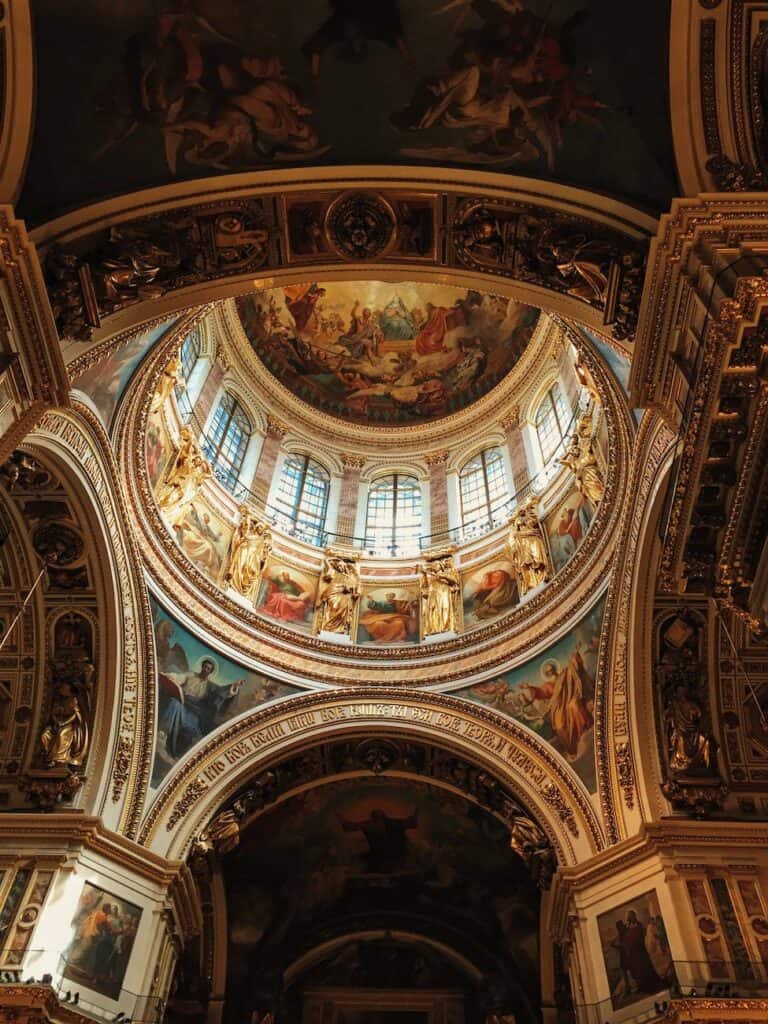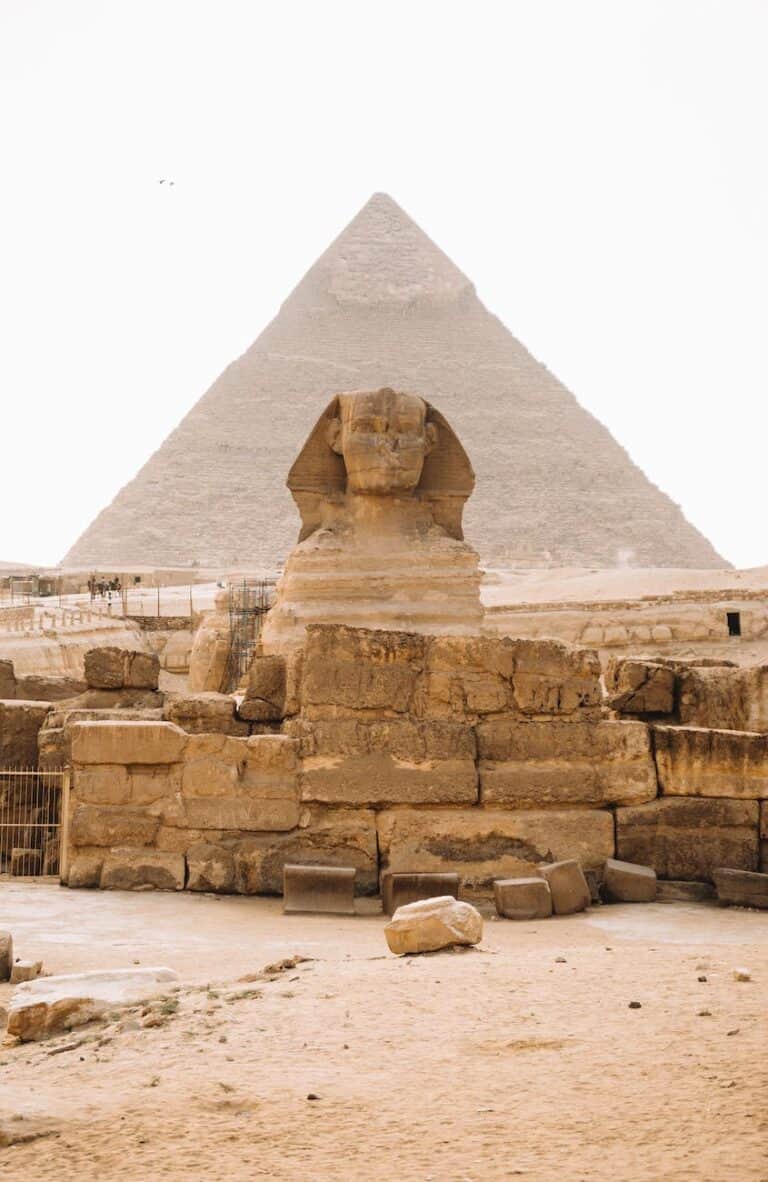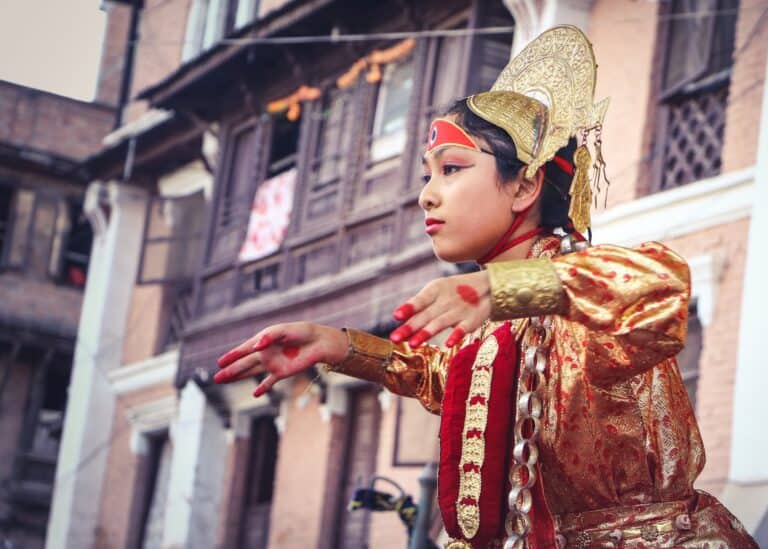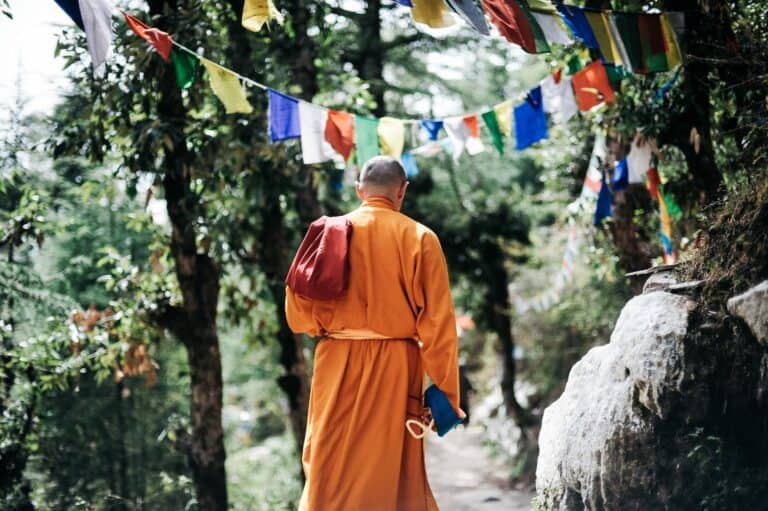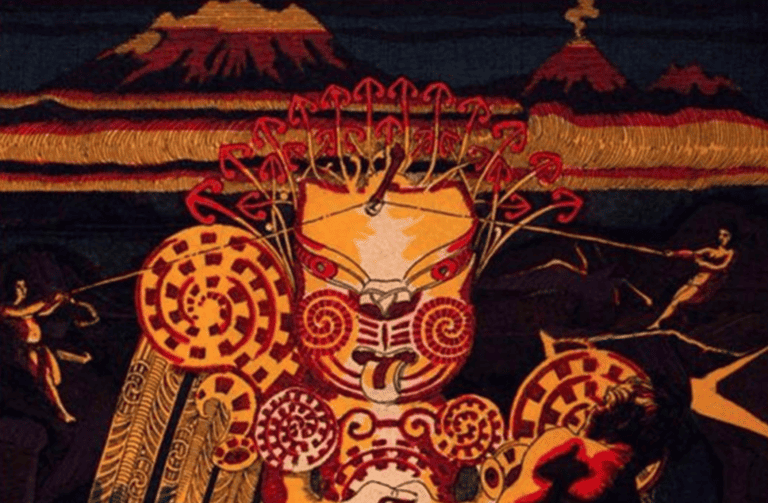Epic Major Pilgrimage Destination in Spain: Discovering the Beautiful Camino
Santiago de Compostela is a major pilgrimage destination in Spain, which hikers refer to as one of the most transformative memories of their life.
The Camino de Santiago trail is usually a very cathartic expedition, with most people under taking it as a pilgrimage or after a difficult period of their lives. Nearly half a million people worldwide come to try their hand (or feet!) on this incredible 500km pilgrimage yearly.
Whether you do this trek to heal from a broken spirit, restore your faith in God or enjoy the beauty the trail offers, the Camino de Santiago trek will not disappoint!
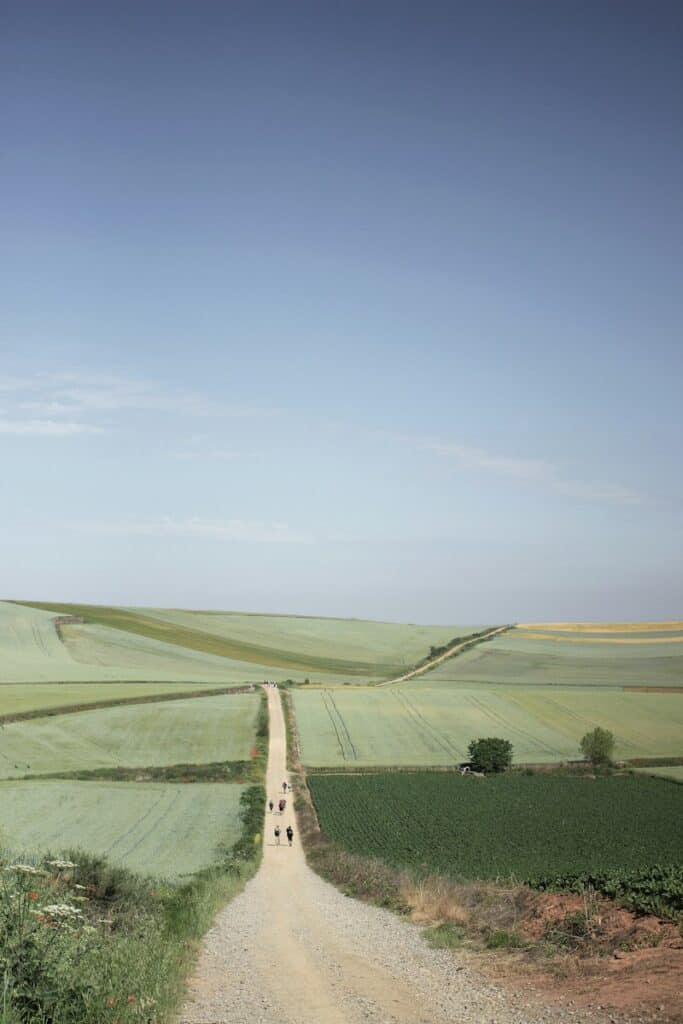
Table of Contents
Where is the Camino Trail Located?:
The Camino de Santiago spans across the picturesque landscapes of Spain, leading pilgrims to the revered Santiago de Compostela Cathedral in Galicia. This ancient route has various starting points, the most popular being St. Jean Pied de Port in France, offering diverse landscapes and cultural experiences.
How to Travel There:
Embarking on the Camino is an adventure in itself. From traditional pilgrim routes to modern transportation, you can tailor your journey. Whether you opt for the classic French Way or the less-trodden Portuguese Coastal Route, the Camino offers many paths for every traveller.
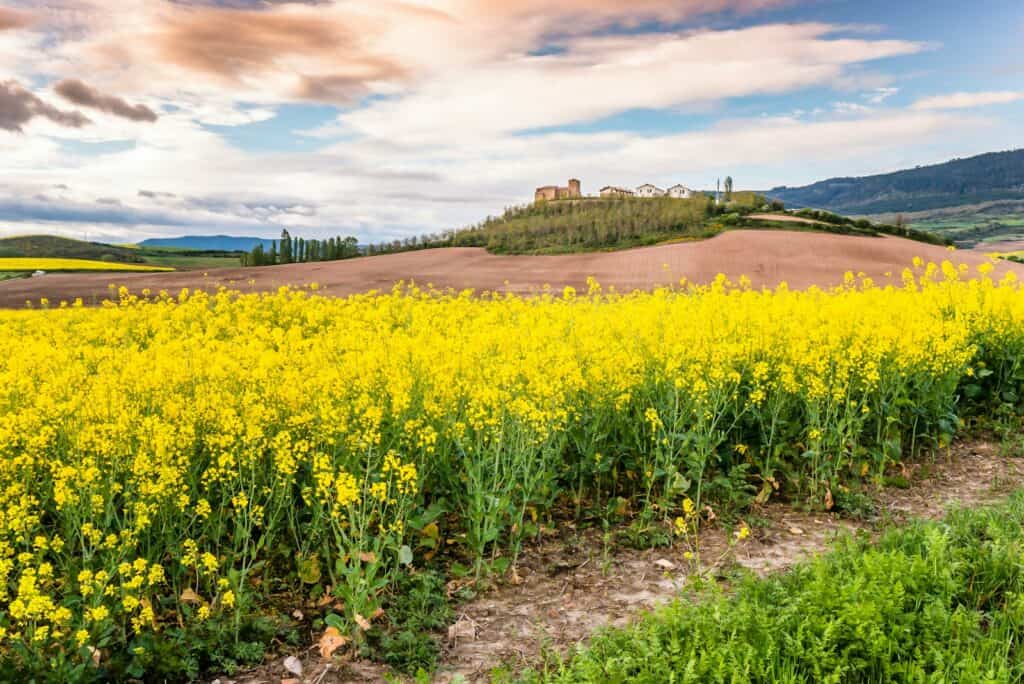
How Much Does it Cost?:
Fear not, intrepid pilgrim! While the Camino de Santiago holds immense spiritual value, it doesn’t have to break the bank. From budget-friendly hostels to luxury accommodations, there’s a lodging option for every traveller. Explore local eateries for affordable yet delectable meals, and watch for free or donation-based activities along the route.
Best Time of Year to Trek the Camino:
Choosing the right time to embark on your pilgrimage is crucial. Spring and early autumn offer pleasant weather and fewer crowds, balancing comfortable temperatures and tranquillity. However, if you seek a more solitary experience, winter might be your calling – just be prepared for cooler temperatures.
SEE UNMISSABLE UK PILGRIMAGE ROUTES: 19 of The Most Beautiful & Sacred Walks!
Duration and Alternative Routes:
The entire Camino de Santiago traditionally takes 30 to 35 days to complete. However, recognizing that only some have the luxury of such an extended timeframe, there are alternative routes and sections you can explore to tailor the pilgrimage to your schedule.
- French Way (Full): St. Jean Pied de Port to Santiago de Compostela (30-35 days).
- French Way (Sections): Choose specific segments based on time constraints, such as the final 100 kilometres from Sarria to Santiago (5-7 days).
Additionally, you can explore alternative routes like the Portuguese Coastal Way or the Northern Way, each offering a unique perspective on the Camino experience.
The Best Major Pilgrimage Destination in Spain: The Camino Day to Day
As we tread the ancient stones of the Camino, let’s delve into the detailed tapestry of this Major Pilgrimage Destination in Spain. Each day unfolds as a chapter in the epic story of your journey.
Day 1: St. Jean Pied de Port to Roncesvalles
Embark on your Camino adventure from the charming town of St. Jean Pied de Port. This first leg is a challenging ascent through the Pyrenees, rewarding you with panoramic views at the Ibañeta Pass. Reach the quaint town of Roncesvalles, steeped in history and home to a renowned medieval monastery.
Day 2: Roncesvalles to Zubiri
The trail meanders through enchanting beech and oak forests, offering a serene escape. Challenge yourself as you descend towards Zubiri, crossing the iconic Puente de la Rabia (Bridge of Anger) – a medieval stone bridge shrouded in local legend.
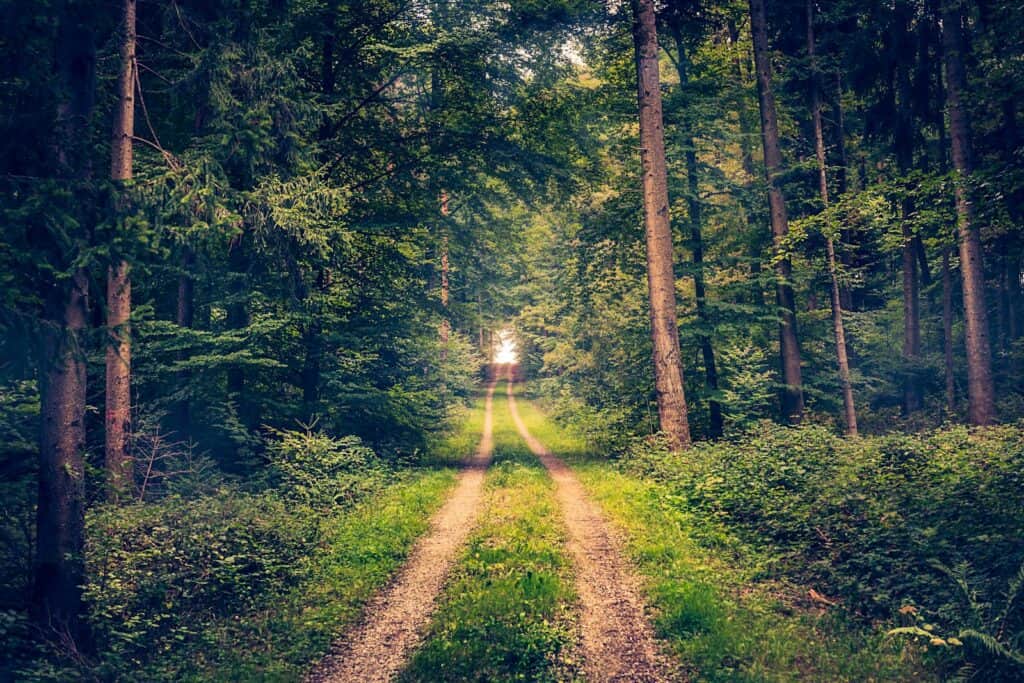
Day 3: Zubiri to Pamplona
Today’s journey brings you to Pamplona, famed for the Running of the Bulls during the San Fermín festival. Stroll through the historic city, exploring its medieval architecture and enjoying the vibrant atmosphere of this Spanish gem.
Day 4: Pamplona to Logroño
Venture into the La Rioja region, renowned for its vineyards. The day’s challenge lies in the undulating terrain, leading you to Logroño. Indulge in local Riojan wines and savour the culinary delights of this gastronomic haven.
Day 5: Logroño to Burgos
As you progress, the landscape transforms into vast plains. Marvel at the majestic Cathedral of Burgos, a UNESCO World Heritage site. The day’s trek is rewarded with the awe-inspiring beauty of this historical city.
Day 6: Burgos to León
Traverse the expansive meseta, where endless horizons unfold. León awaits, adorned with Gothic architecture, including the stunning Cathedral of León. Feel the spiritual energy as you explore this cultural gem.
Day 7: León to Ponferrada
Journey through picturesque landscapes dotted with charming villages. Ponferrada, with its medieval castle, provides a perfect backdrop for reflection. The tranquillity of the surroundings balances the day’s challenge.
Day 8: Ponferrada to O Cebreiro
Ascend to the highest point on the Camino, O Cebreiro, nestled in the Galician mountains. The panoramic views are a reward for the arduous climb. Immerse yourself in the local Celtic-influenced culture of this mystical region.
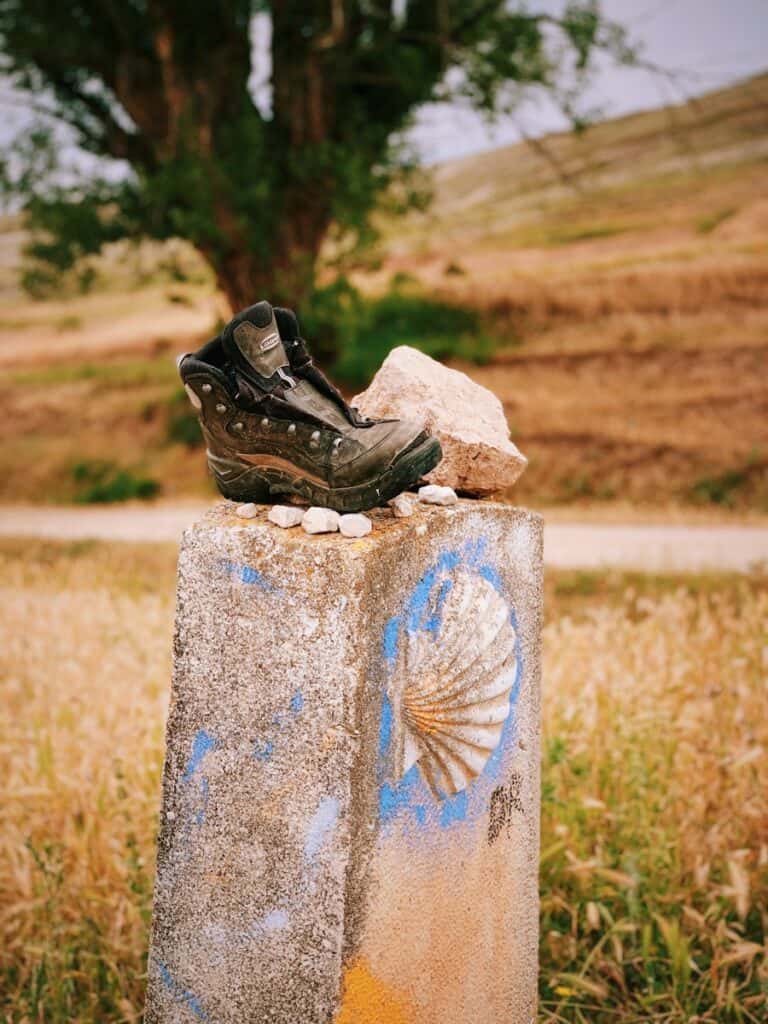
Day 9: O Cebreiro to Sarria
As you descend from the mountains, the scenery evolves into lush green landscapes. Sarria welcomes you with its charming streets and marks the beginning of the final 100 kilometres – a spiritually significant stretch.
Day 10: Sarria to Portomarín
The trail leads you through rustic villages and verdant countryside. Cross the impressive Romanesque bridge into Portomarín, where the medieval town was relocated stone by stone to its current location.
Day 11: Portomarín to Palas de Rei
Navigate through rolling hills and forests, enjoying the serenity of rural Galicia. With its rich history, Palas de Rei invites you to explore its medieval architecture and immerse yourself in the local Way of life.
Day 12: Palas de Rei to Arzúa
As you approach Santiago de Compostela, the anticipation builds. Arzúa, known for its cheese, offers a taste of local flavours. The path becomes more populated with fellow pilgrims sharing stories of their journeys.
Day 13: Arzúa to Pedrouzo
The penultimate day takes you through charming villages and eucalyptus forests. Pedrouzo provides a final respite before the grand culmination of your pilgrimage.
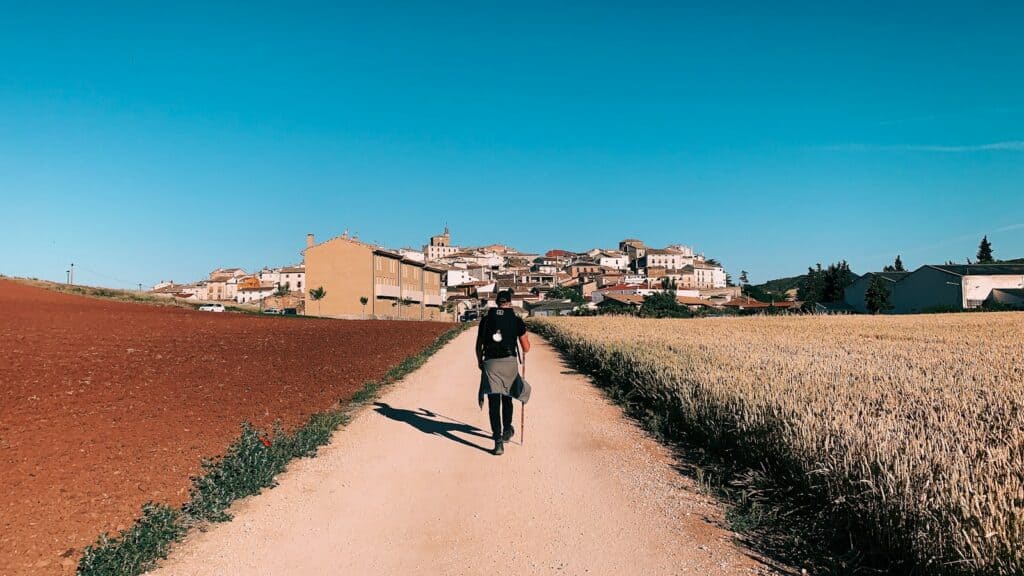
Read our other Pilgrimage Routes for the like the Pilgrimage Routes in Europe: 31 Wonderful Journeys of Faith!
Day 15: Sarria to Portomarín
As you continue your pilgrimage, leaving Sarria behind, the trail leads you through lush landscapes and charming hamlets. Cross the iconic medieval bridge in Portomarín, spanning the Mino River. Explore the town’s historical centre, home to the Church of San Nicolás and the Church of San Juan.
Day 16: Portomarín to Palas de Rei
Traverse rolling hills and rustic villages, immersing yourself in the Galician countryside. Reach Palas de Rei, a town with a rich medieval history. Visit the Church of San Tirso and the Church of Santiago, experiencing the blend of Galician culture and Camino spirituality.
Day 17: Palas de Rei to Arzúa
The journey unfolds through eucalyptus forests and picturesque landscapes. Arzúa, known for its local cheese, offers a delightful gastronomic experience. Explore the charming town and its landmarks, including the Church of Santa María.
Day 18: Arzúa to Pedrouzo
As you approach Santiago, the anticipation grows. Walk through quaint villages and eucalyptus groves on the Way to Pedrouzo. Take in the serene surroundings and prepare for the final stretch of your pilgrimage.
Day 19: Pedrouzo to Santiago de Compostela
The culmination of your journey! The trail leads you to Santiago de Compostela, where the Santiago Cathedral stands tall in all its glory. Attend the Pilgrim’s Mass and witness the swinging of the Botafumeiro, a symbolic and awe-inspiring moment. Explore the historic streets of Santiago and revel in the sense of accomplishment.
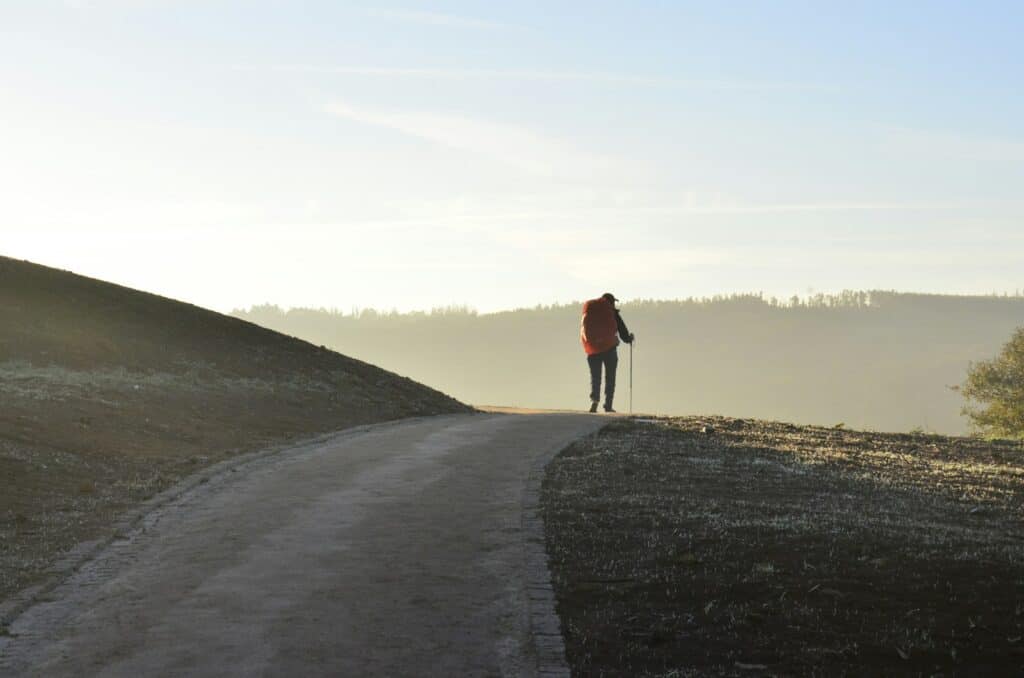
Day 20: Santiago de Compostela
Take a leisurely day to explore the enchanting city of Santiago de Compostela. Visit the Santiago Cathedral, an architectural marvel, and attend additional masses if desired. Wander through the historic streets, where every corner reveals the rich cultural heritage of this UNESCO World Heritage site. Enjoy local cuisine in the numerous cafes and restaurants that line the charming alleys.
Day 21-26: Extension to Finisterre and Muxía
From Santiago de Compostella, you can extend your pilgrimage to Finisterre, the “End of the Earth.” The trail offers breathtaking coastal views as you walk towards the westernmost point of Spain. Explore the town of Muxía, known for the Sanctuary of Virxe da Barca. This extension provides a reflective journey and a unique perspective on the Camino experience.
See Also: The Vatican City Pilgrimage: Its History, Most Famous Routes & Advice.
Things to do in Santiago once you have finished hiking.
After completing your transformative Camino journey, Santiago de Compostela welcomes you to many enriching experiences. As you bask in the afterglow of your pilgrimage, immerse yourself in the vibrant cultural tapestry of this historic city. Here’s a guide on what to do in Santiago de Compostela when you’ve triumphantly concluded your trek:
Explore the Santiago Cathedral:
Venture back to the magnificent Santiago Cathedral, your pilgrimage’s ultimate destination. Take your time to absorb the intricate architecture and relish the spiritual atmosphere. Attend another Pilgrim’s Mass or simply soak in the sacred ambience that pervades this revered site.
Collect Your Compostela Certificate:
Head to the Pilgrim’s Office to collect your Compostela certificate, a tangible acknowledgement of your Camino accomplishment. The certificate is a cherished memento, representing the distance covered and your journey to Santiago.
Wander Through the Historic District:
Lose yourself in the captivating charm of Santiago’s historic district. Stroll along cobbled streets lined with quaint shops, cafes, and boutiques. Absorb the lively atmosphere as street performers and artisans add to the city’s vibrant character.
Visit the Museum of Pilgrimages:
Delve deeper into the history of the Camino at the Museum of Pilgrimages. Explore exhibits showcasing the cultural significance of the pilgrimage, artefacts from various eras, and the evolving traditions that have shaped this timeless journey.
Indulge in Local Cuisine:
Treat your taste buds to Galician delights in the city’s restaurants and tapas bars. Savour regional specialities such as octopus, empanadas, and the iconic almond cake known as Tarta de Santiago. Celebrate your achievement with a well-deserved feast.
Witness the Botafumeiro Swing:
Attend another Pilgrim’s Mass to witness the mesmerizing Botafumeiro swing. This large incense burner, suspended from the cathedral’s ceiling, swings high above the congregation, symbolizing the purification of the pilgrims and their journey.
Join a Cultural Tour:
Enrich your understanding of Santiago’s history and culture by joining a guided tour. Knowledgeable local guides can provide significant insights into the city’s landmarks and hidden gems and share fascinating stories beyond the surface.
Relax in Alameda Park:
Find tranquillity in Alameda Park, a lush green space offering respite from the urban bustle. Enjoy a leisurely stroll through the gardens, admire the viewpoints, and reflect on the profound experiences of your Camino adventure.
Connect with Fellow Pilgrims:
Share your Camino stories and insights with fellow pilgrims at one of Santiago’s pilgrim-friendly bars. The camaraderie built on the trail often continues as you swap tales of challenges, triumphs, and the unexpected joys of the journey.
Attend Cultural Events:
Check the city’s calendar for cultural events, concerts, or festivals during your visit. Santiago often hosts a variety of artistic and musical performances that add fun and an extra layer of cultural richness to your post-Camino experience.
Enjoy every moment of this well-deserved respite in the heart of Galicia. Ultreia! (Onward!)
FAQs about the Camino de Santiago
Can you hike the Camino de Santiago in 2 weeks?
While the traditional Camino de Santiago route takes around 30 days to complete, it’s possible to embark on an abbreviated journey. Following the itinerary in our Camino Portugués guidebook, you could walk from Lisboa to Santiago in 26 days, averaging approximately 24km/15 miles a day.
For those with time constraints, many pilgrims choose to start from Porto. They can complete the trip to Santiago in just under two weeks, maintaining a similar daily distance average. Remember that this condensed version provides a snapshot of the Camino experience, allowing you to immerse yourself in its essence within a more limited timeframe.
How challenging is the Camino de Santiago Trek?
The challenge of walking the Camino is influenced, in part, by navigating hilly terrains. Throughout your Camino experience, you’ll encounter daily altitude gains ranging from 300 to 500 meters.
The French Way averages an altitude gain of 321 meters to provide specifics. In comparison, the Portuguese Way presents an average altitude gain of 278 meters.
What is the average daily distance on the Camino de Santiago?
The average daily distance on the Camino de Santiago varies depending on the chosen route and personal preferences. For a standard 30-day pilgrimage, walkers cover approximately 24km/15 miles daily.
This allows for a balanced and manageable pace, ensuring pilgrims have time to appreciate the journey’s cultural, historical, and spiritual aspects. However, it’s essential to adapt the daily distance based on individual fitness levels, preferences, and available time.
Which route is the best for a shorter Camino experience?
For those seeking a shorter Camino experience, the Camino Portugués from Porto is a popular choice. Pilgrims can complete this route in under two weeks, experiencing the journey’s cultural richness and scenic beauty.
Alternatively, selecting specific sections of well-known ways, such as the final 100 kilometres from Sarria to Santiago, offers a shorter yet spiritually significant pilgrimage.
Is it necessary to carry all your belongings while walking the Camino?
While some pilgrims prefer the traditional experience of carrying their belongings in a backpack, it’s not a strict requirement. Luggage transfer services are available along the Camino routes, allowing walkers to return their bags to the next accommodation.
This provides the flexibility to enjoy the pilgrimage with a lighter load, focusing on the journey. Pilgrims can choose the option that aligns with their comfort and preferences.
What should I pack for the Camino de Santiago?
Packing essentials for the Camino de Santiago include comfortable walking shoes, weather-appropriate clothing, a lightweight backpack, a refillable water bottle, a pilgrim passport (credential), and basic toiletries.
Additionally, carrying a small first aid kit, a hat, and a travel-sized laundry kit can be beneficial. It’s essential to pack efficiently, prioritizing comfort and functionality for the duration of the pilgrimage.
How do I obtain a pilgrim passport (credential)?
A pilgrim passport, a credential, is a crucial document for walkers on the Camino de Santiago. It allows pilgrims to collect stamps at various stops along the route, verifying their journey and eligibility for the Compostela certificate upon arrival in Santiago.
Pilgrims can obtain credentials from official Camino associations, churches, or specific accommodations along the route. Ensure you get it stamped regularly to validate your pilgrimage.
Can I walk the Camino de Santiago alone?
Yes, many pilgrims walk the Camino de Santiago alone, embracing the opportunity for self-reflection and personal growth. The Camino community is welcoming and supportive, allowing solo walkers to connect with fellow pilgrims along the Way. The Camino offers a unique experience fostering camaraderie and shared purpose, solo or group.
Are there accommodations along the Camino de Santiago?
Along the Camino de Santiago, there are a variety of accommodations catering to a variety of different preferences and budgets. Pilgrims can choose from albergues (hostels), hotels, guesthouses, and even monasteries.
It’s advisable to plan your accommodations in advance, especially during peak pilgrimage seasons, to secure a comfortable and convenient place to rest each night.
What is the significance of the Pilgrim’s Mass in Santiago de Compostela?
The Pilgrim’s Mass in Santiago de Compostela holds profound significance for pilgrims completing their journey. The mass is a communal celebration honouring St. James, held daily at the Santiago Cathedral. Pilgrims gather to receive a final blessing and witness the swinging of the Botafumeiro, a giant incense burner. Attending the Pilgrim’s Mass is a symbolic and spiritual conclusion to the Camino de Santiago experience.
How can I obtain the Compostela certificate?
To receive the Compostela certificate, pilgrims must present their pilgrim passport (credential) in Santiago de Compostela. To qualify, walkers must cover at least the final 100 kilometres on foot or 200 kilometres by bicycle.
The Compostela is a recognition of your pilgrimage and a cherished memento of your journey. Pilgrims can collect their certificates at the Pilgrim’s Office in Santiago.
Is the Camino de Santiago suitable for all fitness levels?
The Camino de Santiago is accessible to most individuals due to its wide range of fitness levels. While some sections may be more challenging due to varying terrain, the pilgrimage can be adapted to accommodate different fitness levels.
Listening to your body, taking breaks as needed, and setting a pace that aligns with your physical capabilities are essential. The diverse routes offer options for both leisurely and more challenging experiences.
Are there vegetarian or vegan food options along the Camino?
Yes, the Camino de Santiago provides diverse food options, including vegetarian and vegan options. Many local eateries and accommodations are accustomed to catering to pilgrims’ dietary preferences.
While traditional Spanish cuisine often includes meat and seafood, you can find plant-based alternatives such as salads, vegetable dishes, and other vegetarian-friendly options. Communicate your dietary preferences, and you’ll likely discover a variety of tasty and satisfying meals along the Way.
Can I bring my pet to the Camino de Santiago?
While the Camino is a pet-friendly route, it’s essential to consider the challenges and logistics of bringing a pet. Some accommodations may have restrictions, and certain sections of the trail may need to be more accommodating for animals.
Ensure your pet is comfortable with long walks and that you have the necessary supplies, including food and water. Additionally, familiarize yourself with the route’s local regulations and pet accommodation policies.
Conclusion: Best Major Pilgrimage Destination in Spain
Whether you walk for spiritual fulfilment, physical endurance, or cultural exploration, the Camino de Santiago, the major pilgrimage destination in Spain, promises an unforgettable journey through the heart of Spain. ¡Buen camino!
- Which Countries Best Represent Our 5 Senses? – Beautiful, & Sensual Destinations
 Have you ever wondered which countries best represent our 5 senses? Our entire human experience is held in our sensory experience, and travel evokes a unique multi-sensory experience wherever you go: new smells, experiences, new people, and cultures. Today, we dive into five of the most renowned countries for sensory stimulation: sight, sound, smell, touch,…
Have you ever wondered which countries best represent our 5 senses? Our entire human experience is held in our sensory experience, and travel evokes a unique multi-sensory experience wherever you go: new smells, experiences, new people, and cultures. Today, we dive into five of the most renowned countries for sensory stimulation: sight, sound, smell, touch,… - The Best Sustainable Eco-Tourism Places to Stay in Mexico 2024 – Beautiful & Unique Stays
 Looking for the Best Eco-Tourism Places to Stay in Mexico? Well, we have got you covered. After all, we are in 2024, and with the ever-increasing population and mass tourism worldwide, we must start making sure our travel and holidays help and do not hinder the places we visit. In a world where environmental consciousness…
Looking for the Best Eco-Tourism Places to Stay in Mexico? Well, we have got you covered. After all, we are in 2024, and with the ever-increasing population and mass tourism worldwide, we must start making sure our travel and holidays help and do not hinder the places we visit. In a world where environmental consciousness… - Can Solo Travellers Safely Explore India? An Ultimate Guide!
 So, can solo travellers safely explore India? We are here to help you answer that question. India is definitely a mixed bag! My six-week journey through India was packed with highs and lows, moments of awe and inspiration, and a fair share of ‘tear-your-hair-out’ moments, too! Solo travel? Yes, absolutely, but you must keep your…
So, can solo travellers safely explore India? We are here to help you answer that question. India is definitely a mixed bag! My six-week journey through India was packed with highs and lows, moments of awe and inspiration, and a fair share of ‘tear-your-hair-out’ moments, too! Solo travel? Yes, absolutely, but you must keep your… - How To Plan an Epic Budget-Friendly Trip to Southeast Asia
 Are you looking for tips on how to plan a budget-friendly trip to Southeast Asia? We’ve got you covered. Budget travel is all about balance. Be frugal where you can so that you can reap the rewards later! AND travel for longer—that’s the goal, right?! In 2016, I embarked on a nine-month trip around Asia….
Are you looking for tips on how to plan a budget-friendly trip to Southeast Asia? We’ve got you covered. Budget travel is all about balance. Be frugal where you can so that you can reap the rewards later! AND travel for longer—that’s the goal, right?! In 2016, I embarked on a nine-month trip around Asia…. - Sustainable Tourism Options in Mexico – An Implementation of Hope
 Are you wondering if there are sustainable tourism options in Mexico? Well, the answer is yes, absolutely! Mexico is forthcoming in sustainable and eco-tourism, with many amazing places to stay and activities that are respectful of the culture and environment! Mexico is an increasingly popular tourist destination, known primarily for its beautiful white sand beaches,…
Are you wondering if there are sustainable tourism options in Mexico? Well, the answer is yes, absolutely! Mexico is forthcoming in sustainable and eco-tourism, with many amazing places to stay and activities that are respectful of the culture and environment! Mexico is an increasingly popular tourist destination, known primarily for its beautiful white sand beaches,…

